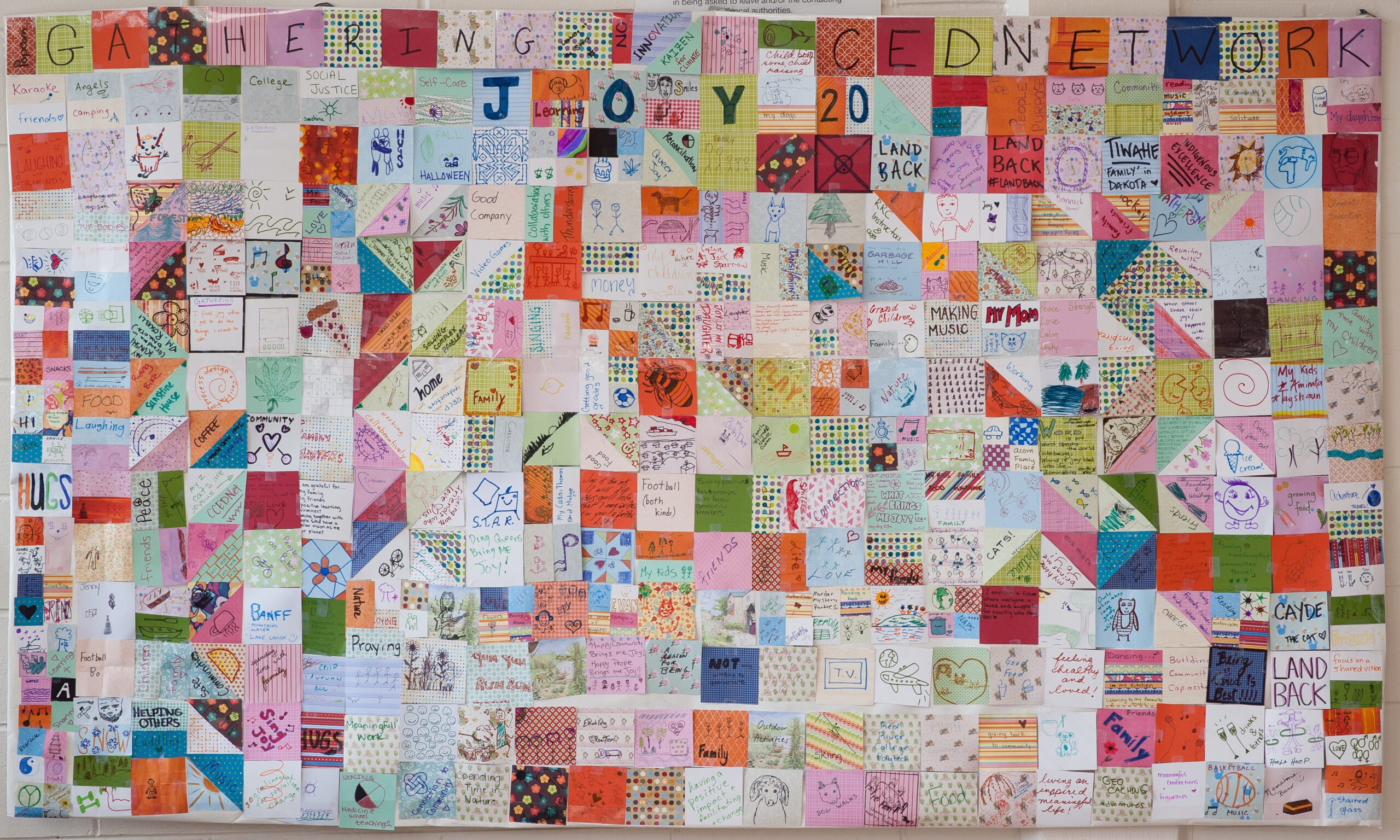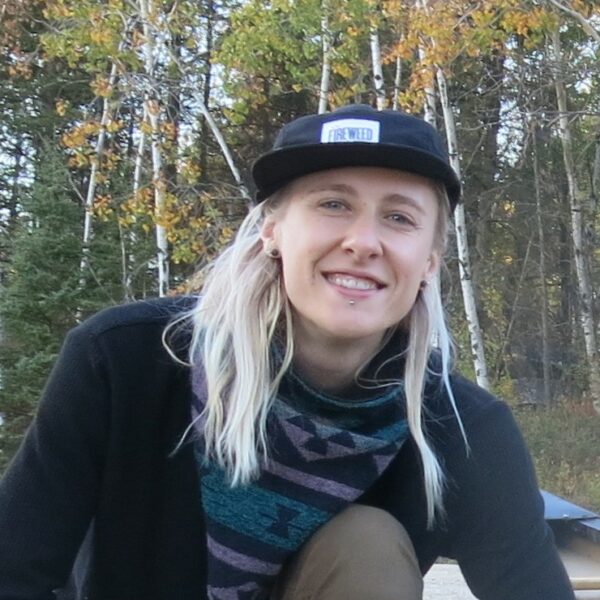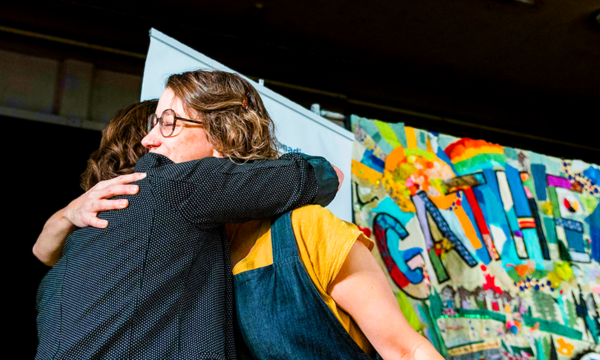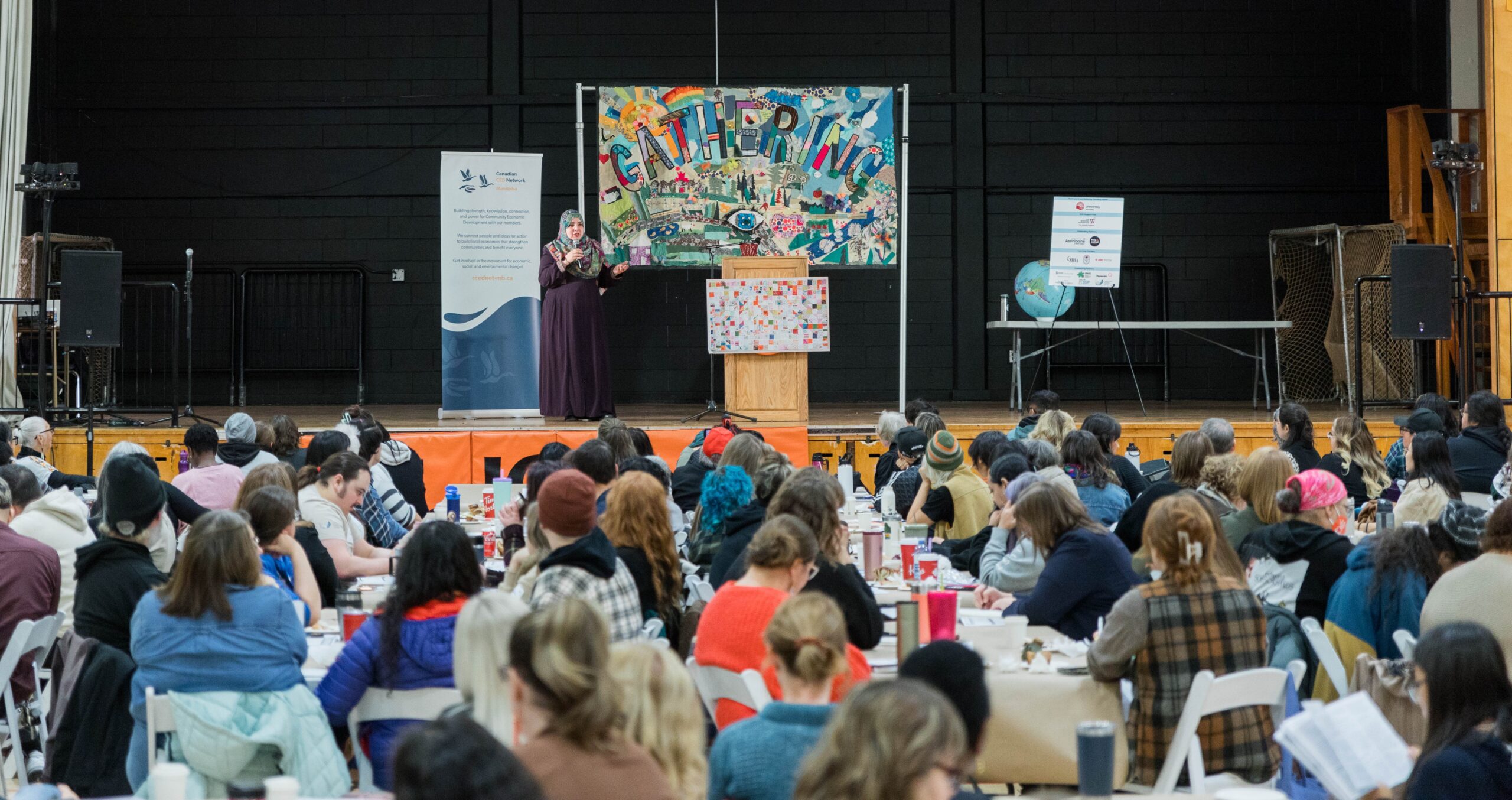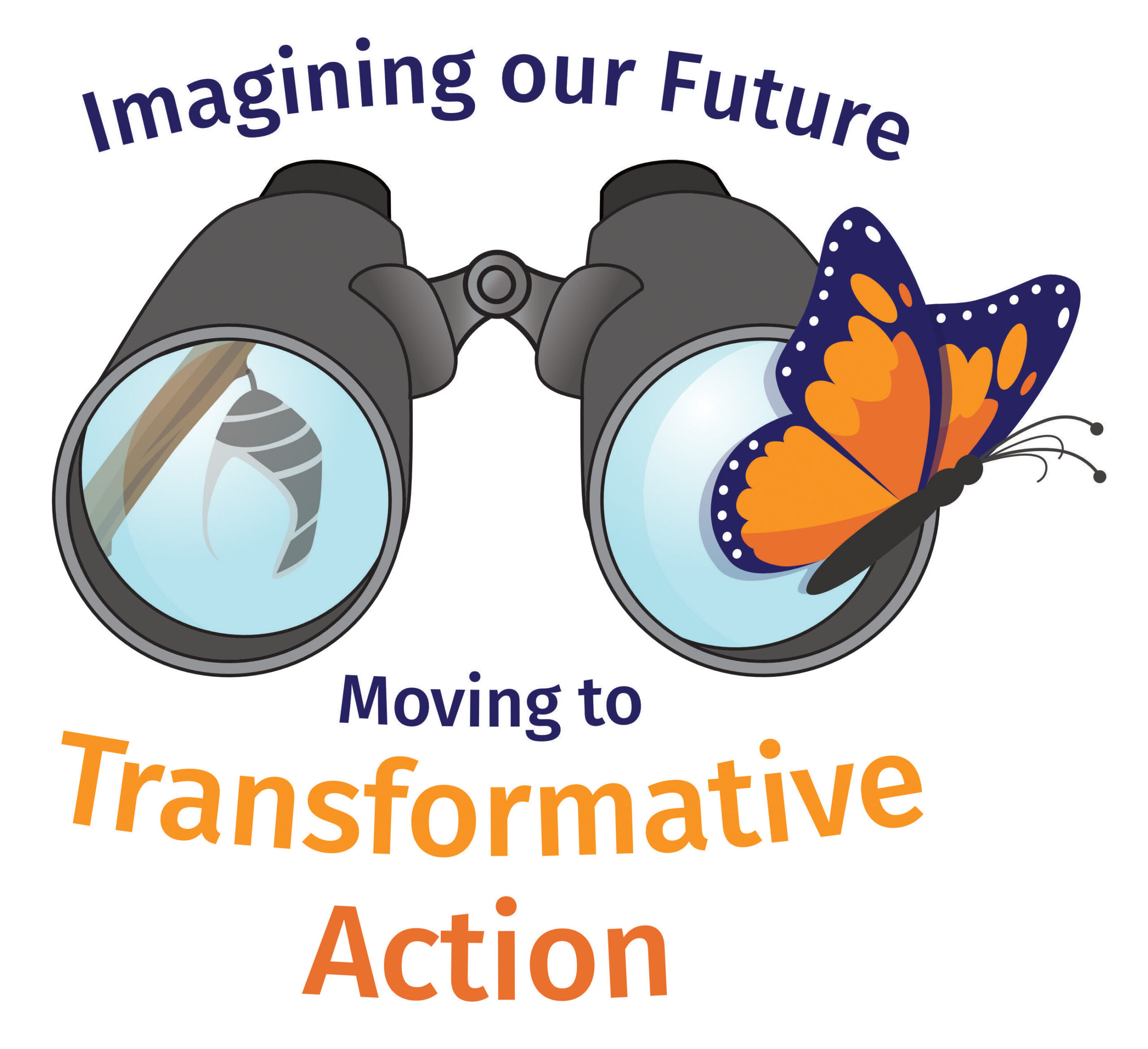Note to the reader: This text was originally delivered as part of an opening plenary alongside speakers Elder Mae Louise Campbell, Michael Redhead Champagne and Karen Sharma at CCEDNet Manitoba’s 2022 annual Gathering on the theme Cultivating Joy.

Hi, everyone. Thank you to Elder Mae Louise, Michael and Karen for taking the time to share with us about their relationship to and experiences of joy. It is a real honour to be speaking alongside them today.
I’d like to note before I dig into this topic much further that my reflections and the way I communicate my own experiences are ever-changing. As I practice openness to learning, listening and adaptivity, I look forward to seeing how this topic continues to shift for me a month from now, a year from now, and hopefully beyond.
A large challenge I see us facing in the non-profit sector (which I include most community economic development work in) is a disconnect in the work we do to improve our communities and the way we do our work. This sector is made up of many changemakers who are experiencing burnout , apathy or are even furthering harm. This has led to what feels like a growing reputation of toxicity in non-profit working environments. People advocating for disability justice talk about how non-profit and community-building work often demands more energy from them than is possible or reasonable to give. Others talk about the problems around the glorification of work in the non-profit sector, and its similarity to the mainstream systems we’re critical of.
People in our sector are often moving from one organization to the next; staff retention is a challenge for many of us; and my experience tells me that this is not based on salaries and wages alone.
I have also seen many people and organizations that are working to shift and transform these problems, using work from activists such as Audre Lorde (The Master’s Tools will Never Dismantle the Master’s House) to ask the question: Are we actually replicating or upholding the same traits and characteristics of settler colonialism and racial capitalism that we’re trying to dismantle?
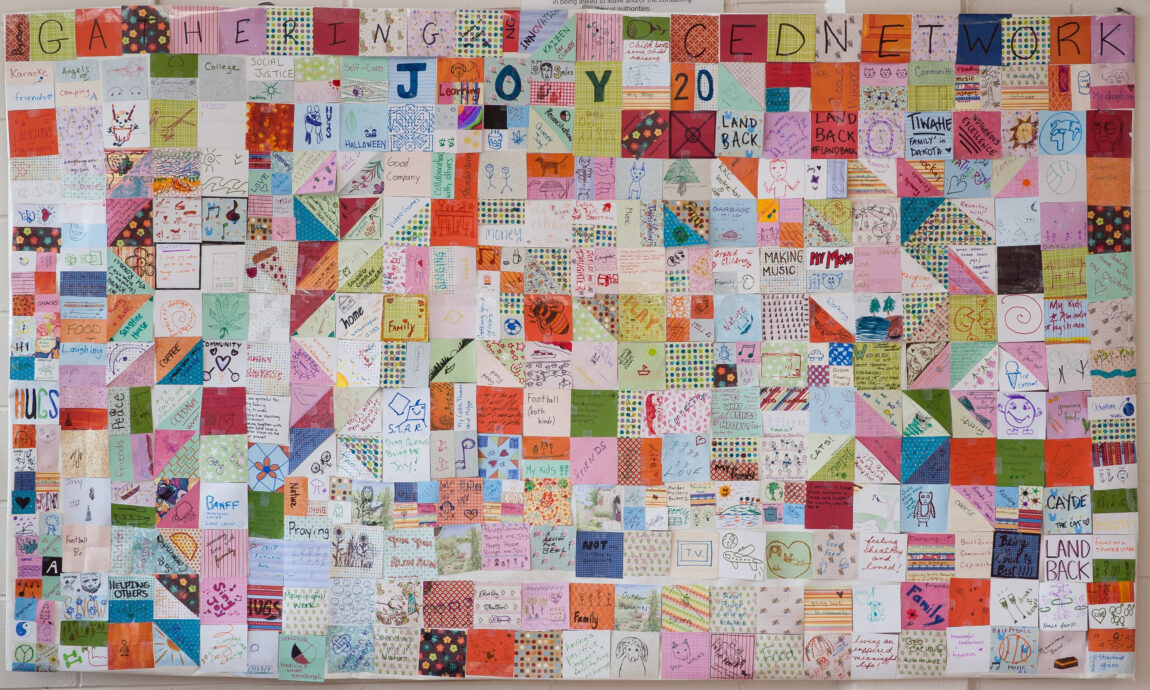
However, despite our challenges, we are still here. What keeps us here? This is a question I’ve spent the last number of years investigating for myself. The reason I keep asking this question is because I have been tempted to leave community work many times, and I so deeply believe in the potential of this sector to make the necessary change and movement our communities need to survive and thrive. Every time I wanted to leave, this question [what keeps us here] would come up. While the answer has shifted many times, something has always kept me here.
At first, it was a sense of duty to do this work. It’s my duty, I thought, as a community member, to use my skills, privilege, and experiences to make change and do better. And while I value the responsibility I feel to my community, how I internalized this “duty” no longer seems to serve my relationships or desire to build community.
With the slow exit of duty, this question came up again. Responsibility to my community on its own was becoming insufficient to convince me to stay in volunteer or underpaid positions. Especially as my capacity for meaningful contributions was being increasingly limited by burnout, confusion, health issues, and mental illness.
In addition to being supported by my therapist, who is still incredibly important in my life, I began searching for others who were asking this question [what keeps us here]. And this is when I encountered conversations and models of joy, suffering, and care that really resonated with me. Along with many others, I was captivated by the writing of adrienne maree brown, who was holding the complexities of joy and suffering in ways that were new for me. I also want to credit the work of angel Kyodo Williams, an activist, writer and ordained Zen priest whose online meditation group I participated in modelled a similar vision of joy and suffering. In one interview angel Kyodo Williams quotes: “you can find joy in the midst of suffering. In fact, that’s exactly where joy lives.”
The idea that it was the joy and care in my community relationships that kept me in this work resonated deeply. But access to joy still felt elusive. I was worried that too much joy would slip quickly into toxic positivity. I was worried that if I started experiencing more joy, I was somehow erasing all of my pain and the pain of those around me. Another part of me felt like it was too vulnerable, and of course, just telling myself to “experience more joy” was not working.
This is around the time I came across a zine called “Characteristics of White Supremacy Culture” written by Tema Okun. Although I was already familiar with many of these ideas, there was either something about the way in which this information was compiled or maybe the time in which I read it, that offered me a new vision or model for my relationship to joy, work and community economic development.
For me, reading this zine gave me incredible compassion for my own social conditioning and an awareness of how it was affecting the way I worked while also giving me a new framework to begin de-conditioning it. Not only did it help me see where I might be causing harm to the people and organizations I was working with, it also helped me see where I was harming myself and subconsciously keeping myself from the joys of slowing down, resting, playfulness, collaborating, and upholding relationships, both and in my personal life and work.
Of the twelve characteristics in this zine, I’m going to go through five of them that felt most like they pushed against my ability to experience joy at the time. As I’ve focused on working through these characteristics and introduced practices for developing new ways of working and relating to others (outside of the characteristics of white supremacy culture), I have seen major shifts in the ease at which joy comes and goes. While these practices don’t take away my (sometimes overwhelming) feelings of grief, anger, and despair, increasing my capacity for joy has also increased my capacity to sit with my grief, anger and despair. Both alone, and in community.
While I go through the naming of some of these characteristics, I would encourage you to think about how your conditioning of these cultural traits has affected your relationship to joy, in work and in life.
Before I begin—I also want to note that this zine has since been updated, and the information is available as an article which I’ll give you a reference to at the end.
The first characteristic of white supremacy culture that was and still is significant for me at times, is perfectionism. The way perfectionism prevents joy for me is that it prioritizes my desired outcome of a situation over my own well-being, the well-being of others, and my relationship to the people I’m collaborating with. And sometimes, this even happens without me being conscious of what my desired outcome is.
When the well-being of myself, others and my relationships are put to the side in favour of perfectionism, conscious or subconscious, joy becomes very difficult for me to cultivate because instead, I’m hyper-fixated on a very particular outcome or feeling I want to achieve.
And again, I’ll note that sometimes this desired outcome for me wasn’t even well defined. Using the South Osborne Farmers’ Market, for example, my desired outcome may have been that I want all the vendors, patrons, volunteers and staff to have the very best experience at our market. But practically, I hadn’t talked to anyone about what that looked like or how we could collaborate to make that happen, meaning that my desire for perfectionism was all based on my own internal ideas and feelings. To let the attachment to my desired outcome go, I had to:
- Acknowledge it
- Share it with my team, collaborate and define our shared expectations and priorities
- Remind myself that there were parts of my outcome that were outside of my control
In doing so, I found there was so much more space for joy to exist in both the small and the big moments as we worked together to uphold our priorities. It was in the working together, building our trust and relationships, and the shared experiences of problem-solving and accomplishing our shared goals that were the most joyful aspects of the work for me.
Some additional ways I’ve experienced perfectionism hijacking my joy include:
- When it becomes more important to point out how someone’s work could be better than to show appreciation for the work they have done.
- When I see mistakes as personalized errors, as opposed to just being… mistakes that everyone makes sometimes because we’re human.
- And, at an internalized level, perfectionism results in me always focusing on what could have been done better or what I should have done instead. This takes a lot of mental and physical energy, which takes energy away from the things I would prefer to prioritize.
The second robber of joy, or characteristic of white supremacy culture, that I have experienced very intensely is a sense of urgency. This sense of urgency is also incredibly activating for my nervous system, which I learned about from Resmaa Menakem in My Grandmother’s Hands. For many years I was in a constant sense of urgency, which had me convinced that resources and time were always and forever (!!) scarce when that wasn’t always true. When I am in an urgent state, my relationships become less caring and more transactional or extractive, which compromises my values and the way I feel about myself. Over time, I have found it incredibly valuable to try and identify what this state of urgency looks or feels like for me so that I am not operating from it subconsciously or for too long. I am never at my best when I am feeling a prolonged sense of urgency. Though, of course, there are times when acting with urgency becomes necessary.
Ironically, a way that this sense of urgency shows up for me, is in my desire to “fix” my sense of urgency. When I first read this zine, I felt an immediately urgent need to fix this characteristic that needed attending to… but um, that did not work. Rather, I have been focused on responding to my tendency towards a sense of urgency by very intentionally practicing pausing and slowing down whenever makes sense and is possible. And sometimes, even when it does not feel possible. I try to ask for more time than I think I’ll need on a project when I can. I support others’ requests for slowing down and extra time. I try to prioritize so I know what is actually time-sensitive versus what simply feels time-sensitive. This also leaves more energy for important things, such as unexpected crises.
The article I’m drawing on to talk about these characteristics of white supremacy culture also identifies helpful antidotes. For this characteristic, one of the antidotes that is likely relevant to many of us here includes writing realistic funding proposals with realistic timeframes–which I know is very tempting not to do when we’re trying to get required funding to retain staff and programming and/or impress our funders. But in my experience, getting more funding that only increases organizational stress and urgency is rarely worthwhile.
The next characteristic of white supremacy culture, which I’m sure many of you are familiar with and gets talked about quite often, is defensiveness.
The zine notes that with this characteristic, more time and energy is spent trying to prevent abuse than facilitating the best out of each person. A lot of energy in the organization is also spent trying to ensure people’s feelings aren’t getting hurt.
While I was re-reading this, it struck me that the sibling to defensiveness, which I have often seen in myself, might be people pleasing or the desire to “manage other peoples’ emotions”. When I’m people pleasing, again, often subconsciously, it’s to prevent having to deal with other peoples’ defensiveness.
My internal conditioning wants me to believe that having a differing opinion from someone is disruptive. It’s not necessarily wrong or bad, but keeping my opinion to myself would have been better. And, if I do have a different opinion than someone, it feels like my responsibility to make sure my disagreement or critique doesn’t hurt their feelings. In some ways, disagreeing can feel like invalidating someone else’s opinion or belief.
The other day I was talking to a friend about this, who has a different cultural experience and social conditioning than me. She observed how much energy it takes, and how much harder it is to get things done when you’re always concerned with how other people are going to react – will they be offended or defensive if you ask a question or disagree with them? My fear of someone’s reaction, putting a lot of energy into anticipating and managing their emotions or reaction, and struggling to connect with them as a result, has definitely been an unwelcome killjoy for me.
Overtime I’ve found my antidote for this has been slowing down to create trusting relationships that can hold mutual honesty, even when it feels hard and deeply uncomfortable. This includes building my own internal emotional capacity to not get offended or insecure if someone disagrees with me. Working to trust myself also gives me more capacity to trust others, and hear what they have to say in a non-defensive way.
Number 4 is Either/or thinking, which was also a big hurdle for me to experiencing joy. This type of thinking for me sought comfort and safety in things being good or bad; right or wrong; and created binaries between experiences such as joy or suffering; rest or rigour.
Of course, I was using narrow categories of how I defined good or bad; right or wrong; and if people didn’t immediately fit into these categories I had defined, I would see them as a threat. Once they “proved” they were in the acceptable category or binary, they were no longer a threat to me. In addition to this being incredibly judgemental and subjective, another way that this kept me from joy, was that I always needed to be hypervigilant of who was a threat or not and to be ready to respond if that threat was initiated. I understand that safety is very important, but for me, this habit was not conducive to community and movement building. I am currently working to find alternatives that respect my need for safety, trust and boundaries, without the judgement or categories.
I believe this is also a characteristic that can lead very quickly to burnout. It’s been hard for me to try and move between rest and rigour, for example, with ease. Allowing for both to exist multiple times throughout a day, or to learn what it means to have a few days more focused on rest, followed by a period of time that’s more focused on rigour. I also know that racial capitalism, the way we’re expected to work, parent, survive, etc. and all our other oppressive systems at play can make the intentionality and ease of these practices particularly challenging. However, back to not falling into the trap of either/or thinking, I also know it is not impossible and would still encourage practice and efforts in this area, where and when we can. My favourite phrase to counteract either/or thinking is now seeing most things as both/and. For example, moving between rest and rigour at the best pace for my body is not possible under racial capitalism, and I can still uphold my ideals for rest and rigour in the best ways I know how given my current circumstances and capacity.
Additionally, I want to say that just because I am speaking to this, does not mean I have this “figured out.” To be repetitive, it’s both/and, not either/or. I’m working on it, and struggle with these things, and may always struggle with these things, and will keep practicing these things, and etc. What’s your both/and?
The last characteristic I’m going to talk about today is individualism, or one I also like to call martyrdom. I see it all the time in non-profit culture, and I have seen it in myself many times. This is the trait that glorifies overworking, praises people for over delivering and, in my experience, is another huge contributor to burnout. There is nothing that causes stress for me, like feeling I’m the only one who can do something… which, I have realized over time, is usually not true, and I do have more control over these feelings than I often want to admit. This not only makes joy challenging because of the stress it causes but also leads to isolation. Some of the antidotes noted in the zine that have worked for me but are still (obviously!) in progress include:
- Devoting significant time and resources to developing cooperation, communication, and conflict skills
- Sharing in the recognition and credit for projects – rotating the spokesperson or face of a project or organization, when possible
- Knowing that even if I’m responsible for something, I’m always accountable to others, and there are always others to consult with
- Delegating or sharing tasks as a practice to remind myself that I’m not the only one responsible for completing something or solving the problems
Outside of these characteristics, there’s one final factor connected to joy that I want to mention, which is surrounding the role of trauma. Living with trauma, which many of us do, can make joy, safety, and love feel unsafe at times. If this is the case for you, I would recommend finding additional support(s) for this work, whether that is through therapy, ceremony, somatics, or other means that you feel are accessible and meaningful in your own life. For myself, I have also found the book “My Grandmother’s Hands: Racialized Trauma and the Pathway to Mending our Hearts and Bodies” by Resmaa Menakem, a supportive piece of work on this topic.
The updated version of the article on white supremacy culture also includes an entire section on fear, touching on topics of both safety and belonging, which I found very resonant and helpful.
If you want to read more and reflect on the ways these twelve characteristics show up for you, you can visit whitesupremacyculture.info or dismantlingracism.org.
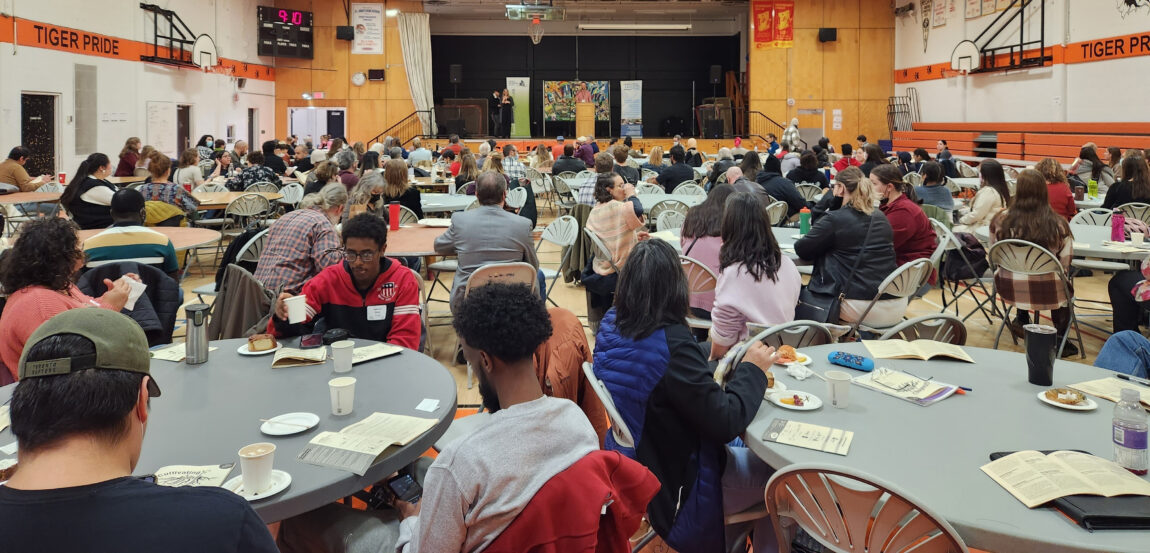
As I’ve been working through de-conditioning these traits of white supremacy culture, and practicing antidotes, I am very pleased to report that my joy and playfulness have been returning. Relationships are a priority for me again, or perhaps, more intentionally than they ever have been. I spend more time cooking and eating delicious food with others, dancing in between meetings, staring in wonder at the moon or resting under the sun, and playing hide and seek with my niblings. I usually pause or rest when I really need to. My community-building work is mostly lifegiving, even when it is challenging. And I have more energy to participate in my community with skillfulness, mindfulness, and intentionality.
I am imagining my work to undo the automatic nature of these traits will be a lifelong process of practice, as they are not only conditioned into me but also into the fabric of our society. The antidotes noted in the article have been instrumental in supporting me in this process.
As an example of how this all shows up for me, I want to fast forward to this year’s Harvest Moon Festival, where a friend asked me: “Do you ever have to give yourself permission to have fun?” And my immediate answer was yes. This work is not easy, it is not quick. I still have to ask myself often:
- “what makes me feel alive?”
- “what keeps me from feeling alive?”
- “what changes do I need to make to create more joy in the world—for myself, and the people around me?”
In an article adrienne maree brown wrote online titled, “additional recommendations for us right now from a future”, she says:
“Feel pleasure every day. Don’t let your body, your heart, forget why we fight—to feel aliveness and togetherness. We will grow.”
angel Kyoto Williams, in an interview with Sounds True, tells us: “we find our joy because we’re released of a sense of fear and ignorance that is what keeps us from being able to directly experience the joy that is actually always there and always available to us in life.”
So, I invite you to practice antidotes to the characteristics of white supremacy culture that cause distress and prevent joy in your relationships, your life, and your work. And in doing so, let’s pursue joy together. For our communities, our organizations, our relationships and ourselves.
Gratitudes: In addition to those noted throughout my reflections, Leah Lakshmi Piepzna-Samarasinha writes extensively about disability and healing justice in this essay in a way that I have really appreciated. This article by Heather Laine Talley speaks further to the culture of white women working in nonprofits. I’m also so grateful to the many day-to-day teachers and mentors who have shaped my learning. Friends, family, community workers and advocates, co-conspirators, authors, podcasters, and more. See revolutions are made up of ordinary people like you and me, where Ayesha Khan talks about the question “who are your greatest inspirations?” I am also grateful for Bethany Daman, Asha Nelson, Meghan Mast and Peter Dueck who supported editing these reflections so they could be shared with others.

